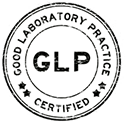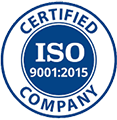




Microbiology testing services are a crucial requirement across many industries worldwide where products, processes and human health are at risk of being negatively affected by the presence and breeding of micro-organisms such as specific pathogens, bacteria, yeast and moulds.

Determining the efficacy of hand sanitizers by comparing the results of the microbial count.
Reference: ASTM E-2755Strains: E. coli, Staphylococcus aureus, Serratia marcescens
DETERGENTS
Reference: ASTM E-2274, E- 2406
Strains: E.coli, S.aureus, Klebsiella, Pseudomonas aeruginosa
The test can be performed by two methods;
Washing machine wash
Bucket wash
– Inoculation of fabric swatches with various microbial strains and treatment with the detergent for specific time.
– Analysis of the reduction in microbial count as compared to the untreated fabric swatch (control)

a. Anti-acne cleansers/soaps:
– Anti microbial efficacy of anti acne formulations tested against C.acnes.
– Time kill assay based on ASTM E-2315 or E-2783 guidelines
– Used to study the activity of an antimicrobial agent against a bacterial strain and can determine the bactericidal or bacteriostatic activity of an agent over time.
b. Anti – Dandruff shampoos:
– Efficacy of anti-dandruff shampoos tested against M.furfur.
– Based on time kill assay
ORAL CARE PRODUCTS
Testing the efficacy of oral care products against;
– Total viable count- both aerobic and anaerobic
– Tongue surface bacteria- Malodor bacteria
– Streptococcus mutans- caries causative agent
– Lactobacilli spp.
– Periodontitis etiological agent- Porphyromonas gingivalis
– Microbial swabs collected using sterile cotton swabs at baseline and at different time points i.e. immediately after brushing , 2 hours, 4 hours, 8 hours and 12 hours after brushing
– Reduction in the microbial count as compared to baseline analyzed.





